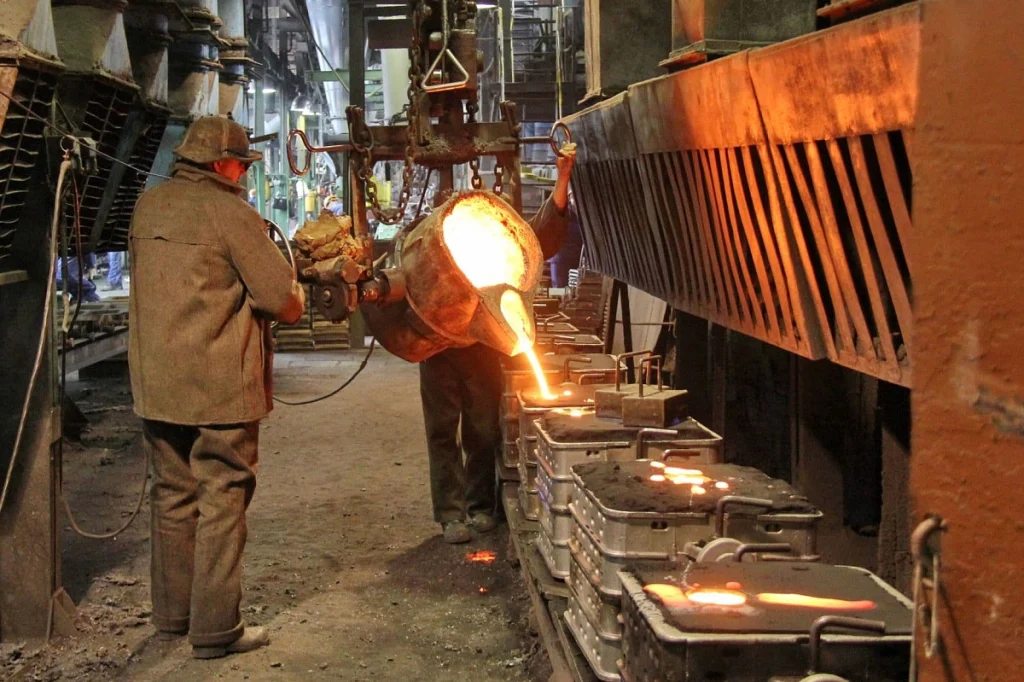Introduction
In the world of heavy-metal components, especially when dealing with cast iron, foundries must decide on the best casting method for performance, cost, and volume. The two major techniques often compared are sand vs die casting. While both have their place, the choice depends on material compatibility, production volume, cost structure, dimensional accuracy, and other factors. This guide dives into how each method stacks up, particularly in a cast iron foundry context.
Understanding Sand Casting
Sand casting is the more traditional process where a mold is formed from sand (often green sand or chemically bonded sand) around a pattern, molten metal (such as cast iron) is poured in, allowed to solidify, then the mold is broken away. This method is very flexible, allows large parts, and a wide range of alloys including ferrous materials like cast iron.
Advantages of sand casting include:
Low tooling cost, because sand molds are inexpensive compared to metal dies.
Flexibility in part size, alloy types, and custom/low-volume production.
Ability to handle large castings and heavy sections (common in cast iron components).
Limitations of sand casting:
Lower dimensional accuracy and rougher surface finish compared to die casting.
Slower production cycles, especially when molds are single-use or manually prepared.
More post-machining or finishing often required.
Understanding Die Casting
Die casting is a high-pressure process where molten metal is forced into a reusable steel die (mold), often used for non-ferrous alloys like aluminium, zinc or magnesium. Its relevance in cast iron foundries is more limited due to the high melting point and material behaviour of ferrous metals.
Advantages of die casting include:
Excellent dimensional accuracy, smooth surface finish, and high production rates for high-volume runs.
Efficiency and automation for parts requiring tight tolerances and minimal finishing.
Limitations of die casting, especially for cast iron context:
High tooling (die) cost upfront, making it less economical for small volumes or custom parts.
Material restrictions: die casting is generally suited for metals with lower melting points; cast iron is less compatible.
Less flexibility for large, heavy parts or frequent design changes.

Sand vs Die Casting | Comparative Summary
| Factor | Sand Casting | Die Casting |
|---|---|---|
| Tooling cost | Low | High |
| Volume suitability | Low to medium volumes, large parts | High volumes of small/medium parts |
| Material range | Wide (including cast iron, ferrous) | Mostly non-ferrous alloys |
| Accuracy & surface finish | Moderate/rough | High precision, smooth finish |
| Flexibility (design changes, sizes) | High | Lower, changes expensive |
| Economical when | Custom, large parts, varied alloys | Mass production, non-ferrous, high precision |
When specifically dealing with cast iron foundry work, sand casting often leads the way, because cast iron lends itself well to sand molds (due to its high melting point, large sizes, etc.). Die casting simply isn’t typically used for ferrous alloys like cast iron in standard operations.
Choosing the Right Process for Cast Iron Foundries
If you operate a cast iron foundry (or are sourcing cast iron components), consider the following when deciding between sand casting and die casting:
Material made of cast iron? Sand casting is the default due to cast iron’s high melting point and the compatibility with sand moulds.
Production volume: If you are making many thousands of identical parts (and if the alloy permitted) then die casting might be economically viable, but for cast iron this is rare.
Size & complexity of the part: Large, heavy, complex cast iron components favour sand casting.
Tolerance & finish requirements: If extremely tight tolerance and surface finish are needed, then the cost trade-off must be assessed; sand cast parts may need finishing.
Tooling cost & design change potential: For low volumes or frequent design changes, sand casting is often better.
Budget & lead time: Sand casting often offers shorter lead time for new molds and lower budget setup.
Best Practice Tips for Foundries Using These Methods
For sand casting: Optimize mold materials (e.g., good sand quality, proper binders) to reduce defects like porosity, voids, or sand inclusions.
For die casting (if applicable for lighter alloys): Invest upfront only when volume and repeatability justify it.
Ensure quality control: dimensional inspection, surface finish verification, and defect detection are crucial, especially when using sand casting for cast irons.
Communicate clearly with your customers about process-based limitations and advantages, e.g., cost explanation, finishing requirements, etc.
Conclusion
In the comparison between sand casting and die casting within a cast iron foundry context, sand casting holds a strong position due to its flexibility, suitability for ferrous alloys, and lower tooling cost. Die casting shines for high-volume, high-precision non-ferrous castings but is less applicable for heavy cast iron components. Understanding the trade-offs helps foundries choose the right process to meet cost, quality and delivery goals.